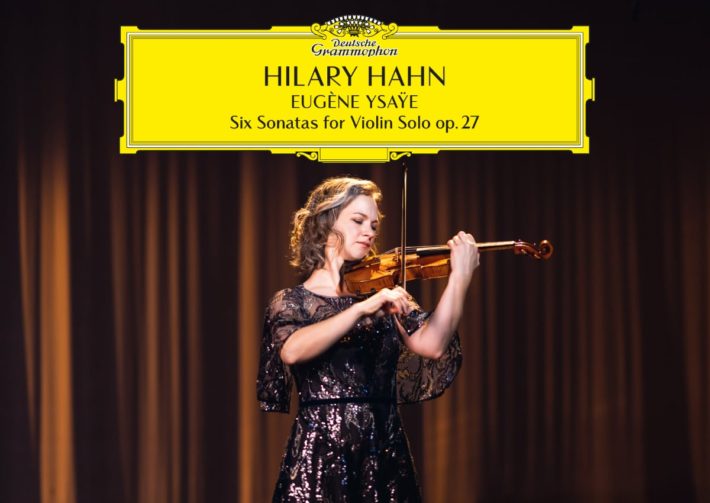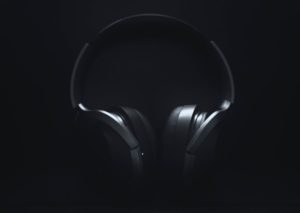Hilary Hahn’s connection to Eugene Ysaÿe comes partly through pedagogical lineage, having studied with one of his pupils. However, there’s also a decades-long relationship with his music: her 2005 Kennedy Center recital featured Sonata No. 1 and in 2007, a concert included Sonata No. 5.
Each of the sonatas is dedicated to a famous violinist, among them Joseph Szigeti (No. 1), Georges Enescu (No. 3), and Fritz Kreisler (No. 4). The whole first movement of No. 1 could well be a robust etude for double stops: disquietude is never far away through Ysaÿe’s jagged harmonies and insistent accents. Hahn grasps the anguish and stringent edge of these intervals without sacrificing the integrity of her tone quality. What her playing also effectively reveals is the interesting texture, a distinct presence of two voices in conflict. Though she doesn’t hesitate to emphasize the many moments they are deadlocked in dissonance, she also gives equate attention to the forward movement when one voice eventually slithers out from under the other. Dynamics may die down toward the end but the suspense only intensifies: Hahn creates the faintest of rustlings that reveals an entirely different sound profile in her instrument.
The Fugato continues on the theme of voice layering; once again, the contouring and approach to each line is well-defined, thanks to the overall clarity of her articulation. The Allegretto that follows has a complex personality of opposites: the graceful moments are indeed a far cry from the ferocity heard prior, with Hahn creating an inviting charm and coyness in the phrases. Others sections, however, highlight a sweeping and tempestuous instability, and it’s satisfying to hear how she doesn’t hold back in these moments. Once again, it’s all about clarity and control, which brings Ysaÿe’s motivic and textural signatures to the forefront.
Related Posts
- Review: Eclipse – Hilary Hahn, Violin
- Review: “Paris” – Hilary Hahn, Violin
- Review: Janáček, Brahms, Bartòk – Violin Sonatas – Patricia Kopatchinskaja, Fazıl Say
The third sonata is one of two single-movement works in the set. As we heard in No. 1, a similar unease pervades the work but perhaps even more so through the unabashed virtuosity: leaps, runs and, again, countless double stops. Hahn is confident enough with the technical demands so that she can focus on the work’s other challenge: maintaining the level of intensity and force, if you will, of the consistently louder dynamics. She carries the momentum without fail all the way to an exciting and scintillating finish. That said, the personality of the Sonata in the larger context feels somewhat too similar to No. 1, with maybe more distinction needed for greater impact.
Some of the movements of Sonata No. 4 bear titles that make a clear reference to the Baroque tradition. The Finale (track 12), ironically, does not but all one has to do is listen: resemblances to the Prelude of Bach’s E major Partita are present. In the Bach, evenness of the notes is key in driving the more intricate aspects of momentum, and Hahn seems clearly aware of this parallel in the Ysaÿe. There is a crystalline consistency in her runs which gives way to a perpetuum mobile-type feel. A welcome contrast is introduced in the expansive middle section. Here, she replaces the unrelenting drive with lovely lyricism and moments of contemplation. The only fault in the movement is actually the ending. It is the last, punctuated note which should seal the deal but its arrival is a hair early, with the emphasis also slightly lacking, it sounds more like an afterthought.
Ysaÿe continues to explore textures and performance techniques in Sonata No. 5: L’aurore (track 13) opens with an arco drone that is eventually flecked with simultaneous pizzicatos. Hahn’s transparent tone paints the subtlest hues of dawn, but sounds a tad too even-keeled. Kerson Leong (whose album we recently reviewed) has a rendition that may not be as fine-tuned where intonation and evenness is concerned. However, the added ebbs in the drone create more dimensionality and maybe even a more rustic feel to his dawn.
Across the works, Hahn is largely successful in creating unique personalities. As mentioned prior, some of the more emotionally charged sonatas could be of more distinctive personas. However, her overall comfort with the technical and artistic demands show thoughtful attention to details that makes the set worth the listen.

Ysaÿe – Six Sonatas for Violin Solo, Op. 27
Hilary Hahn – Violin
Deutsche Grammophon, CD 4864176
Recommended Comparisons
Leong | Liebeck | Zehetmair | Ehnes
Included with an Apple Music subscription:
Read more classical music reviews or visit The Classic Review Amazon store
Follow Us and Comment:
Get our periodic classical music newsletter with our recent reviews, news and beginners guides.
We respect your privacy.










